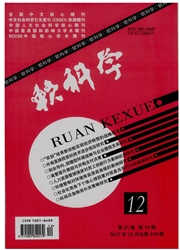

 中文摘要:
中文摘要:
运用某国有银行2008~2010年160家科技型中小企业的相关信息,对企业特征、融资模式与信贷风险之间的关系进行了实证研究.结果表明:科技型中小企业规模(注册资本、净资产、销售收入)、创业股东的从业经验均与信贷风险存在显著的负相关关系;企业所在地区的经济越发达,其信贷风险越低.处于第二产业、获得“高新技术企业”资质认定的企业信贷风险要显著低于其他企业.供应链融资模式比传统融资模式更能缓解银企之间的信息不对称,从而显著降低企业信贷风险;抵押担保方式能显著降低企业信贷风险,而其他担保方式(质押、信用和保证)却不起作用.
 英文摘要:
英文摘要:
This paper, with one state-owned bank' s relative data of SME in science and technology from 2008 to 2010, makes an empirical study on the relationship between firm characteristics, financing model, and credit risk. The result shows that SME scale in science and technology (including registered capital, net assets and sales revenue), entrepreneur- ial shareholders experience has a significant negative impact on the credit risk. In addition, the area economy where enterprise located is more developed, lower its credit risk is. Those enterprises in the secondary industry with high-teeh enterprise qualification have lower credit risk than that of other enterprises. Compared with the traditional financing model, supply chain financing model can better alleviate the information asymmetry between banks and enterprises, and thereby significantly reduce credit risk. The mortgage way can significantly reduce credit risk, but other guarantees (pledge, credit and guarantees) but does not work.
 同期刊论文项目
同期刊论文项目
 同项目期刊论文
同项目期刊论文
 期刊信息
期刊信息
